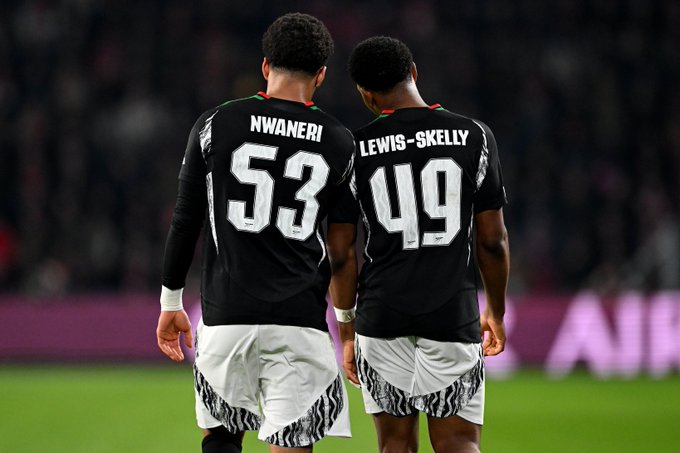The inclusion of 15-year-old Max Dowman in Arsenal’s 23-man Champions League squad (List A) alongside established stars like Bukayo Saka and Declan Rice, while simultaneously omitting other promising young talents like Ethan Nwaneri and Myles Lewis-Skelly, sparked confusion among fans. This seemingly perplexing decision, however, was not an oversight or a tactical snub, but rather a strategic maneuver dictated by UEFA’s intricate squad registration rules, designed to balance the demands of elite competition with the imperative of fostering homegrown player development. Understanding this nuanced approach requires a closer look at the regulations governing squad composition and the clever utilization of List A and List B.
UEFA’s List A constitutes the core Champions League squad, subject to stringent limitations. Capped at a maximum of 25 players, including a minimum of two goalkeepers, List A mandates that eight spots be reserved for ‘locally trained players’. This category encompasses players who have developed within the club or within the same national association between the ages of 15 and 21. Further complicating matters, within these eight reserved spots, a maximum of four can be ‘association-trained’, meaning they developed at another club within the same national association. Crucially, if a club fails to fulfill the locally-trained player quota, the permissible squad size is reduced accordingly. This intricate framework necessitates careful planning and strategic player selection. Alterations to List A are permitted only before the round of 16 in February 2026, when clubs are allowed to add up to three new players.
While List A represents the primary squad, List B offers a crucial avenue for integrating academy players into the Champions League campaign. This list provides clubs with greater flexibility, allowing them to include an unlimited number of eligible players, who must be born on or after January 1, 2004, and have been registered with the club for two continuous years since their 15th birthday, or for three years with a single short loan spell. The crucial difference between List A and List B lies in the timing of submission: List B players can be registered up to midnight the day before each match. This provision allows for ongoing assessment and integration of young talent based on performance and development. In Arsenal’s case, both Nwaneri and Lewis-Skelly meet the List B criteria, having spent sufficient time within the club’s system. This eligibility explains their absence from List A—they can be seamlessly incorporated into the squad for each match via List B, thereby maximizing flexibility.
Dowman’s situation presents a unique case requiring a different approach. At only 15 years of age, he has not yet accumulated the two years of registration required for List B eligibility. This age-related technicality effectively forced Arsenal’s hand. To ensure Dowman’s participation in the Champions League campaign, the club had no option but to include him in the limited List A roster. This inclusion was not a symbolic gesture or an attempt to generate publicity, but rather a necessary measure dictated by UEFA regulations. Dowman’s inclusion, therefore, underscores not only his exceptional potential but also the meticulous squad management employed by Arsenal.
Arsenal’s strategy in navigating these complex regulations demonstrates astute squad management. By strategically omitting Nwaneri and Lewis-Skelly from List A while retaining their eligibility through List B, the club effectively maximized its senior squad slots while simultaneously ensuring the availability of emerging talents for each match. Dowman’s inclusion on List A, dictated by regulatory necessity, further highlights the meticulous planning involved. This approach effectively expands Arsenal’s player pool beyond the 23 names on List A, offering a dynamic and adaptable squad capable of responding to various scenarios. List B becomes a strategic reserve, allowing the seamless integration of young prospects as needed, providing valuable experience and bolstering the overall squad depth.
Arsenal’s Champions League squad, therefore, represents a carefully constructed balance of experience and potential. List A comprises a blend of established stars and promising youngsters, ensuring a competitive edge while adhering to UEFA regulations. The inclusion of Dowman on this list, necessitated by the rules, serves as a testament to his exceptional talent and Arsenal’s commitment to nurturing young players. List B, although not explicitly named in the initial squad announcement, remains a vital component of the overall squad strategy. This list, expected to feature players like Nwaneri and Lewis-Skelly, provides Arsenal with the flexibility to call upon academy graduates for each match, fostering their development and providing valuable match experience at the highest level of European competition.
Ultimately, Arsenal’s squad composition reflects a well-calculated strategy, optimizing both immediate competitiveness and long-term player development. While the omission of Nwaneri and Lewis-Skelly from List A may have initially appeared puzzling, it is, in fact, a shrewd maneuver that leverages UEFA’s regulations to maximize the club’s overall squad depth. This approach ensures that these promising young players remain firmly within the Champions League picture, readily available to contribute via List B when called upon. The seemingly perplexing decision, therefore, is not a snub but a sophisticated demonstration of squad management, highlighting Arsenal’s commitment to nurturing its emerging talent while simultaneously competing at the highest level of European football.


